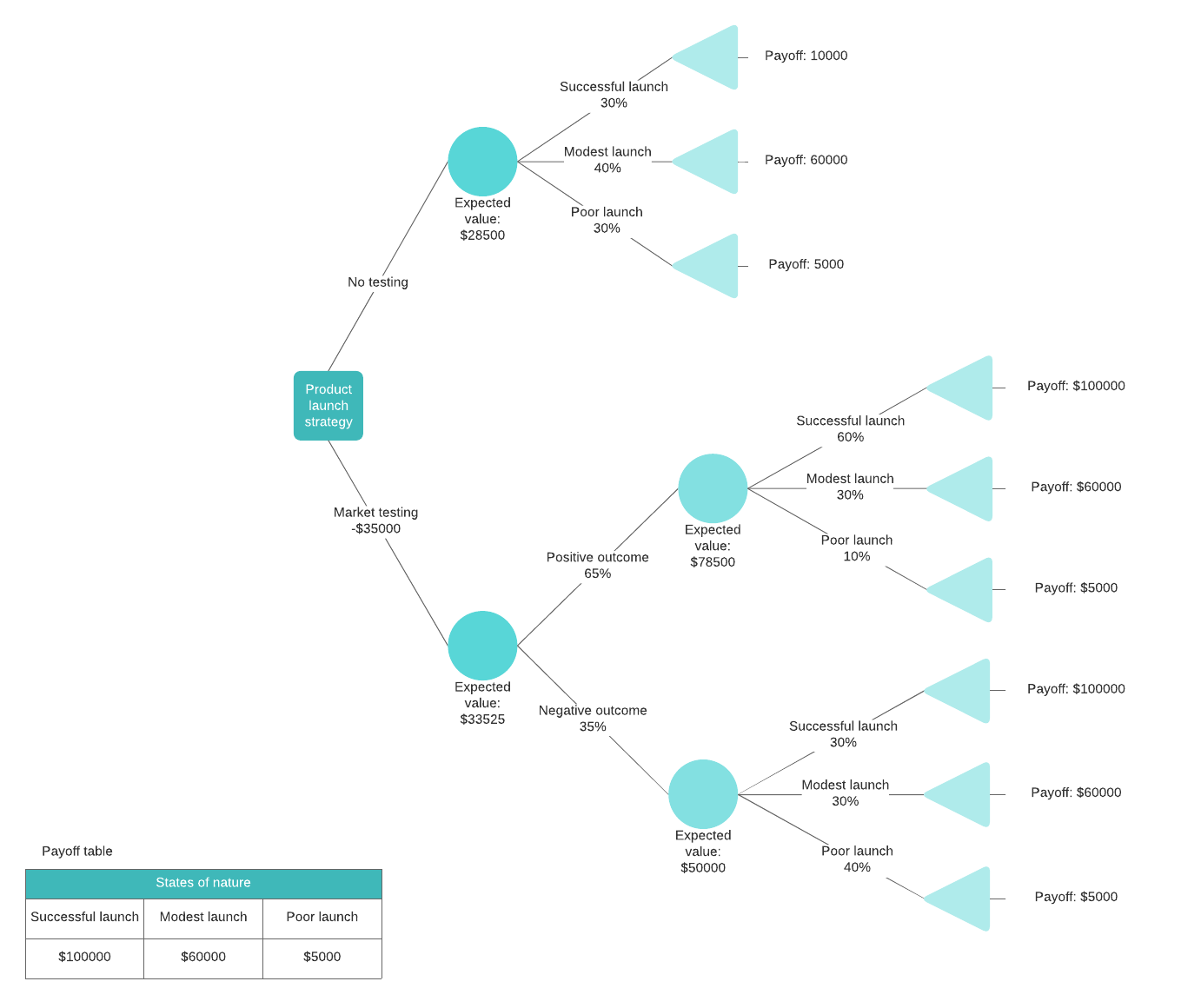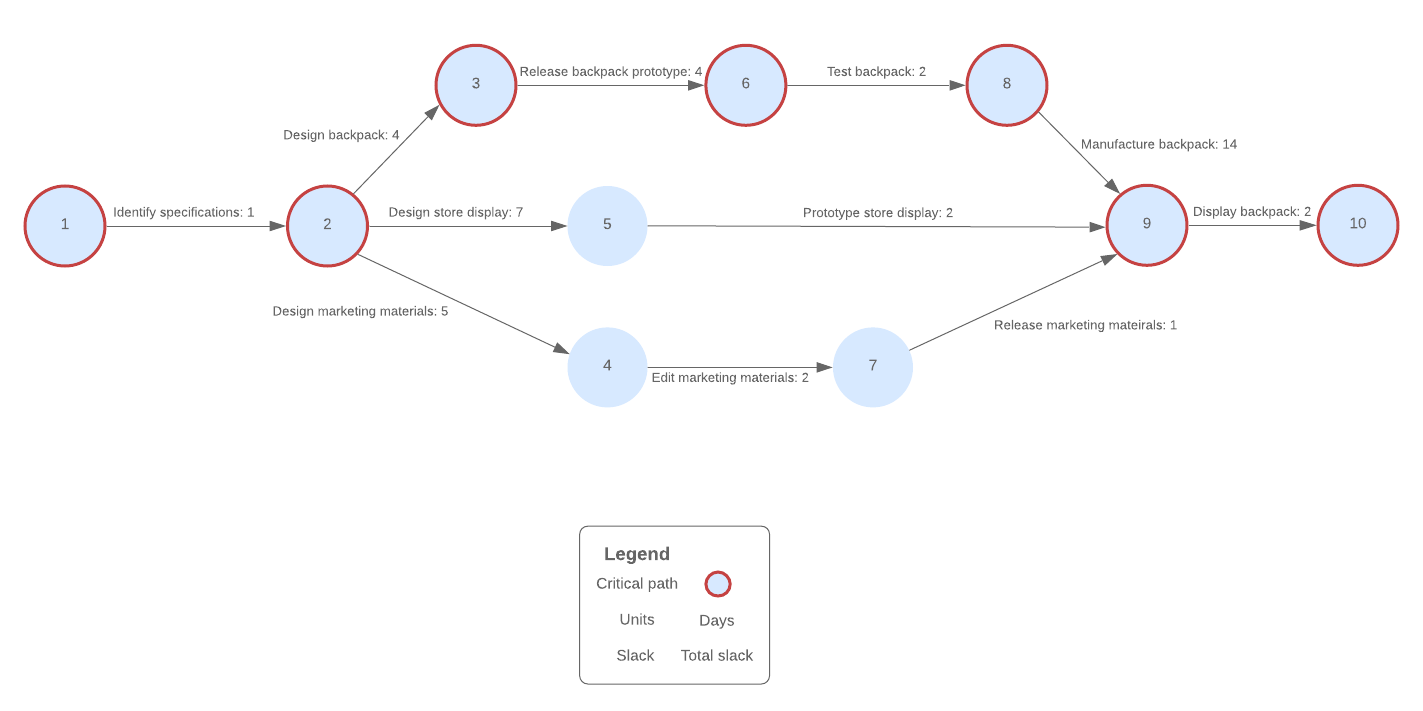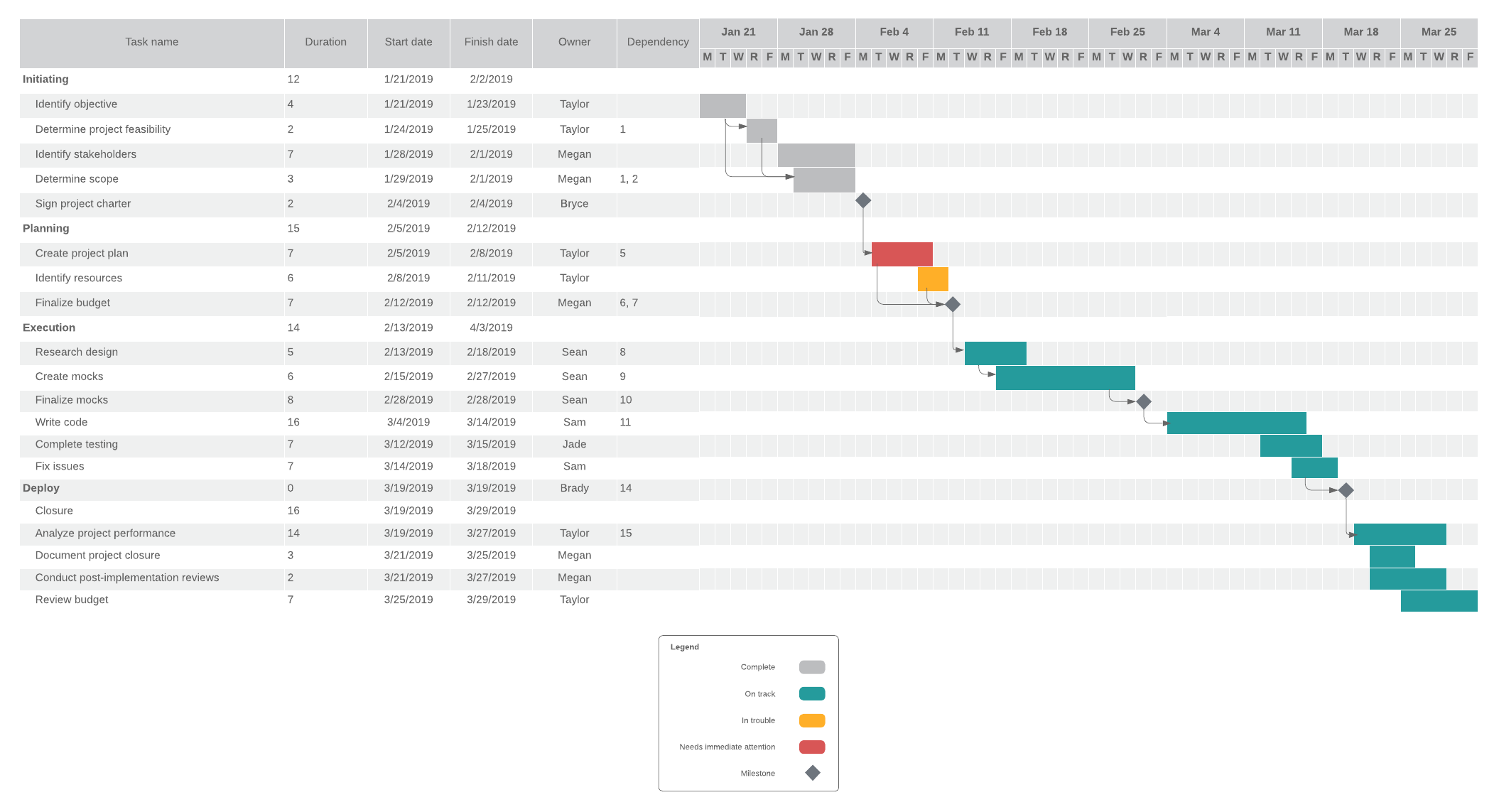Make It So: How to Conduct a Feasibility Study for Better Project Planning
Lucid Content
Reading time: about 7 min
Topics:
The most successful companies have ambitious goals. Whether you’re launching a new product or delving into a new market, growth requires some level of testing and risk. Sometimes, it means taking on projects or initiatives without knowing exactly how it will come to life or whether it will ultimately benefit the business.
Still, successful business leaders know that time and resources are the most valuable assets for any company. And smart project managers work to make sure both are being maximized for the good of the business. Understanding the feasibility and potential ROI on a project before it ever gets started will not only help you make the most of your time—but maximize your business results.
Determining feasibility
Successful project management is all about execution—and successful project managers monitor tasks and ask questions to ensure key milestones are met and projects stay on track. What roadblocks might derail the project along the way? Does the business have the people, processes, and tools in place to see the project from ideation to completion?
This is the initiation stage of the project management lifecycle. At this stage, you determine your objectives, identify your major project deliverables, and decide whether the project can reasonably be completed with good results. This is where a feasibility study comes into play.
What is a feasibility study?
Simply put, a feasibility study is an assessment of the practicality of a proposed plan or method. Just as the name implies, the study answers the question, “Is this project feasible?”
To determine this, start by answering the who, what, when, when, and how of your project. Conduct an analysis to determine who needs to be involved in the project, what needs to be done, when it needs to be completed, and how everything will come together to make the project successful. This process of evaluation is at the core of a feasibility study, a common process to complete when results are uncertain and stakes are high.
Feasibility study example: Company A is looking to invest in a new software-as-a-service (SaaS) solution. First, the stakeholders in the investment will analyze what technology or workflow problem the investment will address. The team will also take contractual or subscription costs into account, plus what resources will be required for training and implementation. The study may also need to gauge what kind of change management will be required to gain buy-in. Those conducting the study evaluate all the project data, as well as pros and cons. Finally, they can make an informed decision on whether the investment is a go.
Types of feasibility studies
There are five types of feasibility studies, each of which provides a different lens to help you evaluate whether your business idea or project is viable:
1. Economic feasibility
When budgets are at play, it’s important to determine whether the investment will be worth it. Simply put, will your project be profitable? With an economic feasibility study, you run a cost-benefit analysis to determine how much value the project will bring to the business.

2. Technical feasibility
This broad concept can be applied to many types of projects, from software development to construction. Validate the technical resources and capabilities needed to convert the ideas into a working project or system.
3. Operational feasibility
Even the most strategic, well-intentioned projects can go astray if they’re too difficult to bring together, or don’t directly address or solve the problem at hand. An operational analysis helps you understand how well the proposed project will address the problem.
4. Schedule feasibility
Also referred to as time visibility, this type of feasibility study can help you determine how reasonable the project’s timeline is when measured against existing projects and available resources. Proper evaluation at this step can also help you avoid unpredictable or extra costs.
5. Legal feasibility
Legal feasibility analysis helps you understand if your proposed plan conforms to legal and ethical requirements. These requirements may include zoning laws, data protection acts, or privacy laws.
How to conduct a feasibility study
Think about the last time you needed to solve a problem—either at home or at work. If it was a familiar problem, you likely already had a previous experience or game plan to guide your progress. New types of problems or circumstances, however, require new, creative ways of thinking and innovative solutions.
When determining how to approach a business need, problem, or opportunity, it’s important to determine whether your plan of attack is feasible, and what steps needed to be taken to be successful. But how do you separate a feasible project from a misguided one?
Here are seven steps to determine if your project is feasible:
1. Analyze the problem
First, conduct a preliminary analysis of project requirements to assess the practicality and viability of the proposed plan. Do you have the technology and resources required to get the project off the ground? How will you measure and determine the ROI of the project? Understanding your business goals and objectives before you start the project will help keep everyone aligned and working toward the same goal.
2. Evaluate the budget
The quickest way to derail any new project or initiative is to misuse or waste budget. Especially when budgets are limited, your stakeholders want to know whether the money you spend will make a difference to the bottom line. Determine how much budget you have available for the project—and identify the projected revenue streams. How will this project result in a monetary return on investment?
3. Do your research
Next, take a deeper look at the market. Is there a demand for your product or business plan? For smaller projects, what roadblocks will you face along the way? What are your competitors doing? If your project goals are too narrow, or they don’t align to larger business goals, it might be wise to reevaluate your approach.
4. Make a plan
Armed with your research, create an action plan to bring your project to life. What resources—people, processes, and tech—will you need to complete the project? A work breakdown structure (WBS), which breaks down projects into smaller, more manageable pieces that you can reasonably evaluate and assign to teams, can be used to build this plan.

There are plenty of diagrams available to better manage a project. Similar to a WBS, Program, Evaluation, and Review Technique (PERT) charts and Gantt charts can be used to break projects into smaller more digestible tasks to determine how long each step of the project will take. A PERT chart better illustrates the interdependency between project tasks, while a Gantt chart helps you visualize progress on a project as it’s happening.


5. Make a balance sheet
Now that you have an actionable plan in hand, it’s time to reevaluate the finances of the project. To do this, bring in financial data to prepare a project kickoff balance sheet. Are you still projecting the same revenue?
6. Check your data
It’s crunch time. Before you decide whether it makes sense to move forward with the project, take another look at all the data at your fingertips. Objectively, how likely is it that this project will be successful?
7. Decide what’s next
With all of these evaluations in place, you’ll be able to confidently, objectively, and strategically determine whether the project is feasible. If it’s not, you can build a more thoughtful, strategic plan to run through a feasibility study. If all signs point to “yes,” it’s time to give your project the green light.
Business moves fast, and for many businesses, it can be tempting to skip evaluation stages in order to get projects done more quickly. Too often, however, this leads to misalignment, derailed projects, duplicative work—or even worse, wasted time and budget. No matter your industry, a feasibility study can help you surface risks and uncertainties and increase your odds of business success.
About Lucidchart
Lucidchart, a cloud-based intelligent diagramming application, is a core component of Lucid Software's Visual Collaboration Suite. This intuitive, cloud-based solution empowers teams to collaborate in real-time to build flowcharts, mockups, UML diagrams, customer journey maps, and more. Lucidchart propels teams forward to build the future faster. Lucid is proud to serve top businesses around the world, including customers such as Google, GE, and NBC Universal, and 99% of the Fortune 500. Lucid partners with industry leaders, including Google, Atlassian, and Microsoft. Since its founding, Lucid has received numerous awards for its products, business, and workplace culture. For more information, visit lucidchart.com.
Related articles
Advantages of PERT charts vs. Gantt charts
What's the difference between a PERT chart and a Gantt chart? Both of these tools can improve your project management processes. Learn when to use PERT and Gantt charts and how to create them.
The 4 phases of the project management life cycle
Learn about the 4 phases of the project management life cycle. Whether you’re working on a small project or a large, multi-departmental initiative, you can apply our tips to successfully take your projects from initiation to close.
